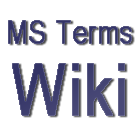Collisional activation: Difference between revisions
No edit summary |
No edit summary |
||
| Line 2: | Line 2: | ||
Synonymous with [[Collisional Excitation]]. | Synonymous with [[Collisional Excitation]]. | ||
}} | }} | ||
{{Rev5| | |||
See [[collisional excitation]].||}} | |||
{{orange| | {{orange| | ||
| Line 9: | Line 12: | ||
energy is brought about by the same mechanism as in collision-induced dissociation. | energy is brought about by the same mechanism as in collision-induced dissociation. | ||
}} | }} | ||
<!-- Gold Book --> | <!-- Gold Book --> | ||
Revision as of 22:41, 7 April 2010
Obsolete Template
This template is no longer used.
Orange Book
| ORANGE BOOK DEFINITION
IUPAC. Analytical Division. Compendium of Analytical Nomenclature (the Orange Book). Definitive Rules, 1979 (see also Orange Book 2023) |
| Collisional activation |
|---|
|
Collisional activation, collisionally activated dissociation An ion/neutral species process wherein excitation of a projectile ion of high translational energy is brought about by the same mechanism as in collision-induced dissociation. |
| IUPAC 1997 Orange Book Chapter 12 |
| Index of Orange Book Terms |
Gold Book
| GOLD BOOK DEFINITION
IUPAC. Compendium of Chemical Terminology, 2nd ed. (the Gold Book). Compiled by A. D. McNaught and A.Wilkinson. Blackwell Scientific Publications, Oxford (1997). |
| Collisional activation |
|---|
|
http://goldbook.iupac.org/C01157.html An ion/neutral species process wherein excitation of a projectile ion of high translational energy is brought about by the same mechanism as in collision-induced dissociation. (The ion may decompose subsequently.) Source: PAC, 1991, 63, 1541 (Recommendations for nomenclature and symbolism for mass spectroscopy (including an appendix of terms used in vacuum technology). (Recommendations 1991)) on page 1554 |
| IUPAC Gold Book |
| Index of Gold Book Terms |
